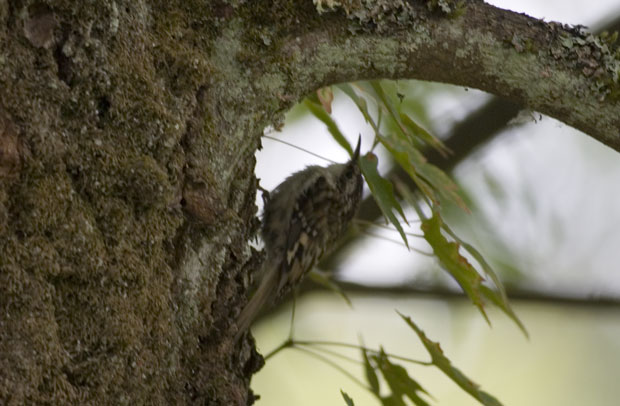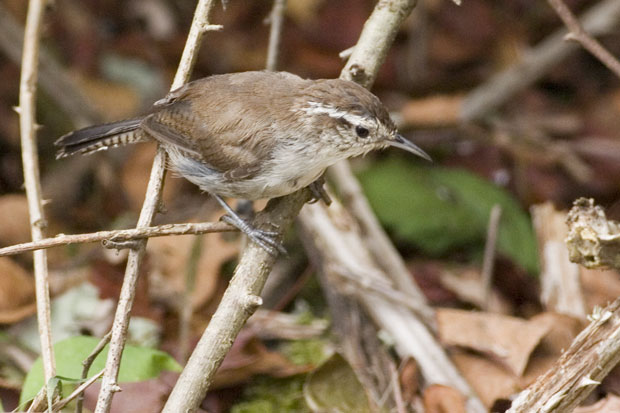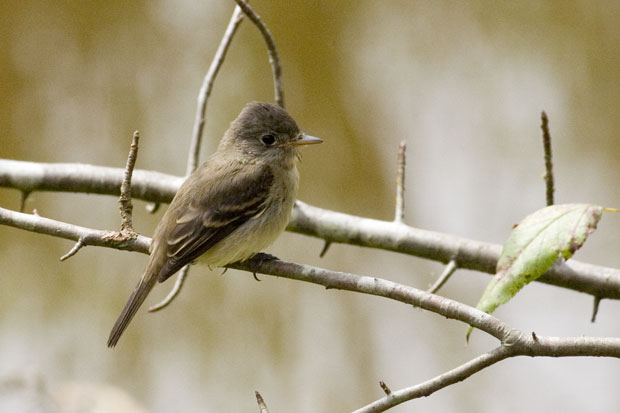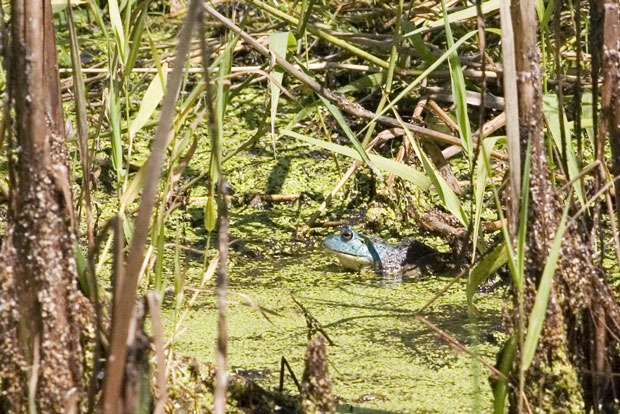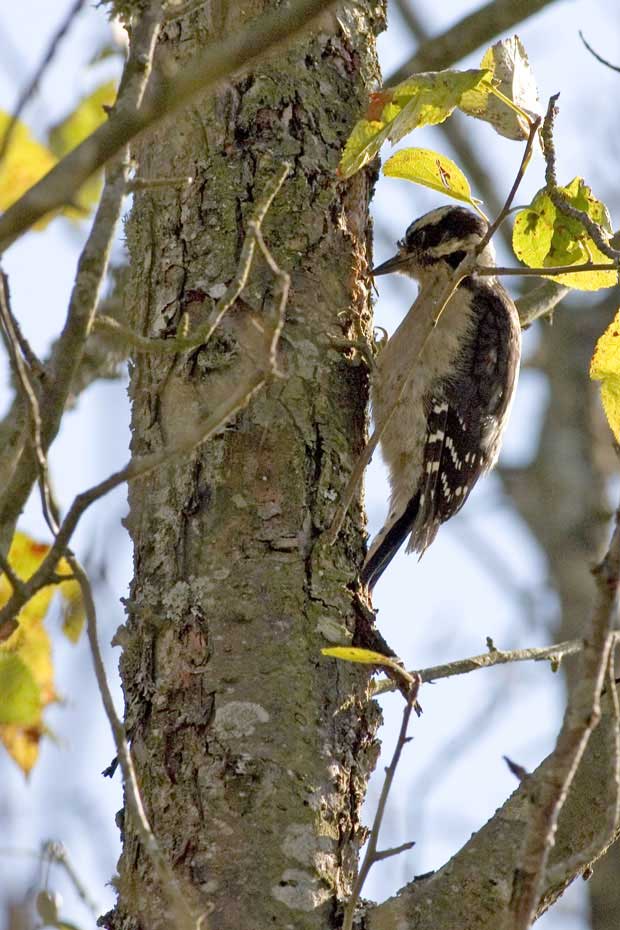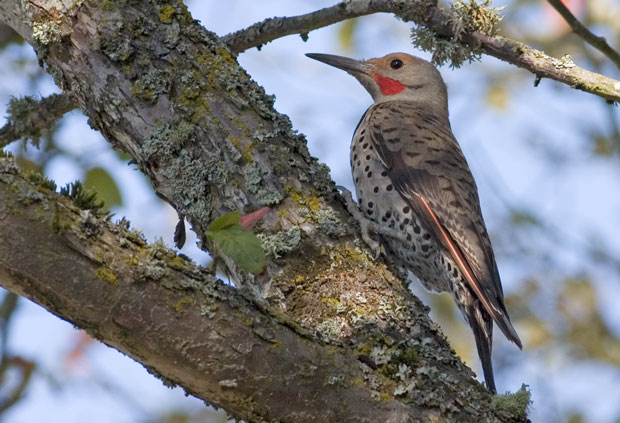I was about to finish my fourth straight trip to Nisqually National Refuge and was thinking that I certainly hadn’t seen many birds today, and, had, in fact, had finally resorted to taking more pictures of Giant Blue Herons.
However, while talking to a couple from the mid-West they informed that there was a Giant Horned Owl up the path a short ways. I picked up the pace, hoping it would still be there when I got there, and, sure enough, there it was sunning himself on a large branch:
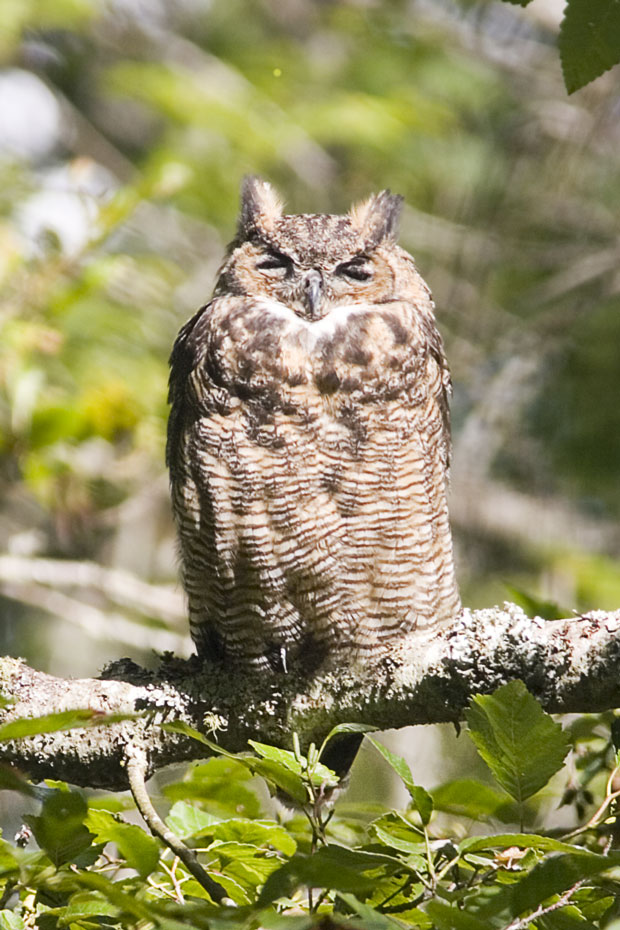
I was amazed at how big, and stocky it was, despite the fact that it was several hundred yards away. At first I thought it was sleeping, but when I got home and examined the pictures I had taken I realized he had turned his head completely around while I was talking pictures.
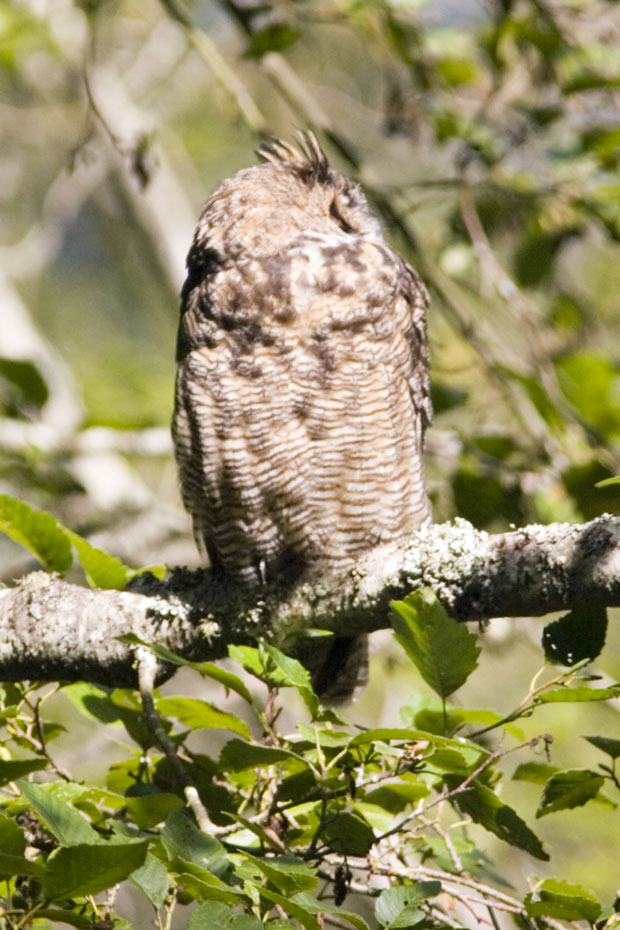
It’s hard not to be reminded of Mary Oliver’s essay entitled “Owls:”
In the night, when the owl is less than exquisitely swift and perfect, the scream of the rabbit is terrible. But the scream of the owl, which is not of pain and hopelessness and the fear of being plucked out of the world, but the sheer rollicking glory of the death-bringer, is more terrible still. When I hear it resounding through the woods, and then the black pellets of its song dropping like stones into the air, I know I am standing at the edge of the mystery, in which terror is naturally and abundantly part of life, part of even the most becalmed, intelligent, sunny life – as, for example, my own. The world where the owl is endlessly on the hunt is the world in which I live too. there is only one world.
In the daytime, I was more awed than cowed, but it was clear that this was a formidable predator, and a rare one in this area. My book lists over 365 local birds, including several other owls, but does not list this species at all, even though Cornell Lab’s Bird Guides says they are found throughout America.

